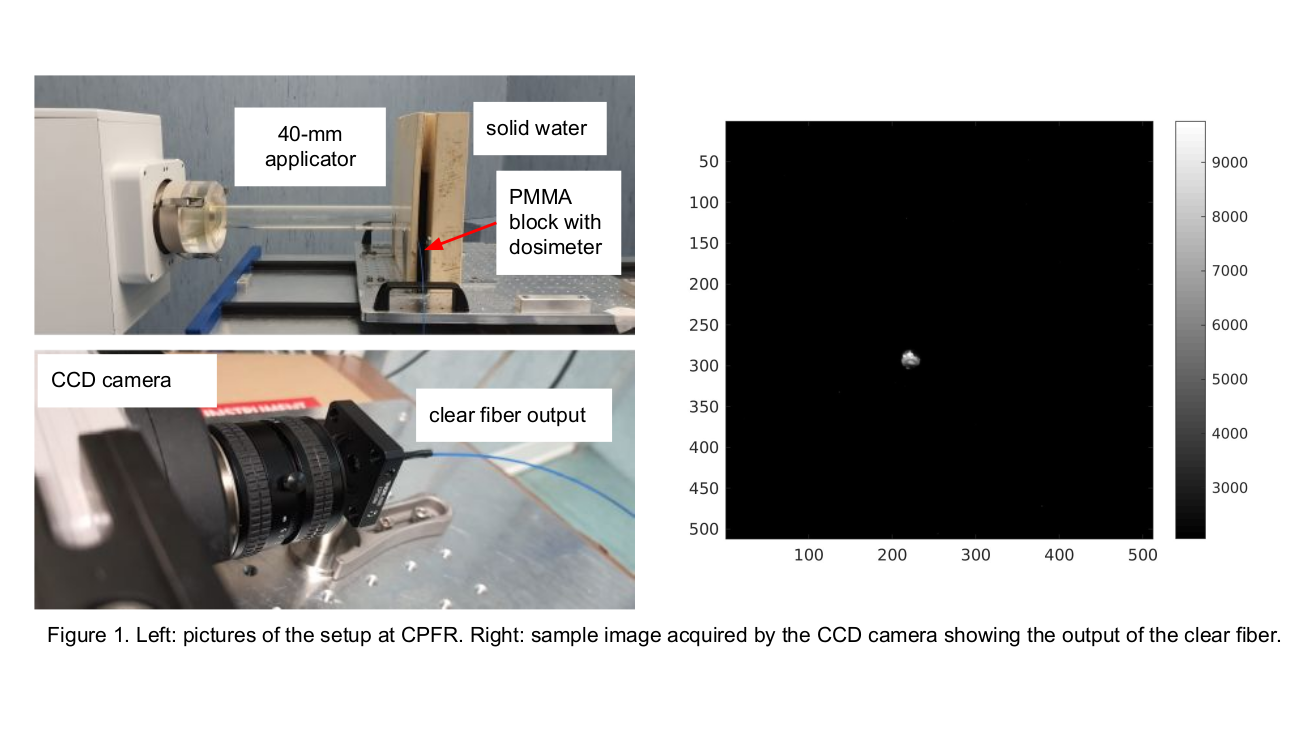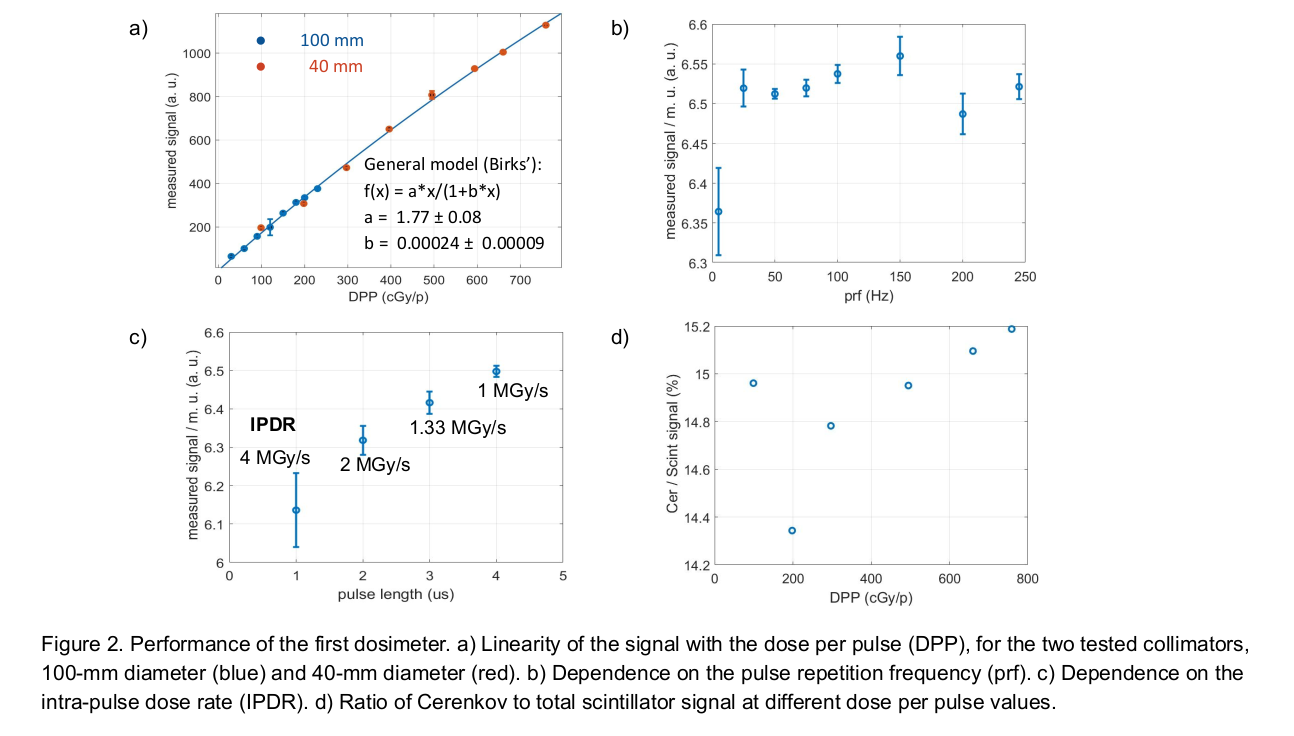Plastic scintillator-based dosimeters for FLASH radiotherapy
OC-0932
Abstract
Plastic scintillator-based dosimeters for FLASH radiotherapy
Authors: Esther Ciarrocchi1,2, Matteo Morrocchi1,2, Damiano Del Sarto3,2, Fabio Di Martino4,2, Stefania Linsalata4, Jake Harold Pensavalle3,2, Maria Giuseppina Bisogni1,2
1University of Pisa, Department of Physics, Pisa, Italy; 2Istituto Nazionale di Fisica Nucleare, Pisa Section, Pisa, Italy; 3University of Pisa, Scuola di Specializzazione in Fisica Medica, Pisa, Italy; 4Azienda Ospedaliero-Unversitaria Pisana, U. O. Fisica Sanitaria, Pisa, Italy
Show Affiliations
Hide Affiliations
Purpose or Objective
This contribution describes the development, for the INFN project FRIDA (Flash Radiotherapy with hIgh Dose-rate particle beAms), of dosimeters based on plastic scintillating fibers imaged by a CCD camera, and their performance evaluation by means of irradiations with the electron FLASH research accelerator located at the Centro Pisano Flash Radiotherapy (CPFR) in Pisa.
Material and Methods
The first dosimeter was composed of a 10-mm long plastic scintillator fiber, with 1-mm diameter, coupled to a 25-m long clear optical fiber, whose output was imaged by a CCD camera. Cyanoacrylate glue was used for coupling, which was performed in a peek opaque tube for mechanical stability. The dosimeter was embedded in a PMMA support and placed in a solid water phantom, irradiated with an electron FLASH triode-gun accelerator (Fig.1). Two applicators were used, with 100-mm and 40-mm diameter, respectively. The beam energy was fixed at 9 MeV, and the following beam parameters were varied to test the dosimeter dependence on them: 1) dose per pulse in the range 30-760 cGy/p; 2) pulse repetition frequency (with fixed dose per pulse, pulse length and number of pulses), thus changing the total irradiation time and average dose rate; 3) intra-pulse dose rate (changing also the pulse length in order to have a fixed dose per pulse of 4 Gy/p). The Cerenkov radiation contribution was also estimated by irradiating a portion of the clear optical fiber in place of the scintillating fiber.
A second, smaller dosimeter was also developed, with 3 mm length, 500 um diameter, coupled to a 10-m long clear optical fiber with 250 um diameter. In this case, epoxy was used for optical coupling inside a black carbon tube. This prototype will be tested in the future data taking sessions.

Results
Preliminary results show that the first dosimeter exhibits the following properties (Fig. 2): 1) only modest saturation at high dose per pulse values in the investigated range of 30-760 cGy per pulse, with a Birks’ coefficient of 2.4e-4 AU/MeV using the fit function: S = a*E/(1 + b*E); 2) independence from the pulse repetition frequency, with less than 1% fluctuations in the investigated range of 5-245 Hz; 3) slight dependence on the intra-pulse dose rate, with a maximum variation of approximately 7% increasing the intra-pulse dose rate from 1 to 4 MGy/s; 4) less than 15% of the detected light can be due to Cerenkov radiation.

Conclusion
The first developed detector showed satisfactory performance for applications in FLASH dosimetry, because the saturation and Cerenkov stem effect can be easily corrected. In addition, the prompt readout with a CCD camera provides immediate feedback and can readily be scaled to use for 1D and 2D arrays scintillating fibers, easily enabling 2D dosimetry. In the next developments, we will measure the percentage depth dose, the beam time and spatial profile in water, and we will also determine the dosimeters aging with irradiation.